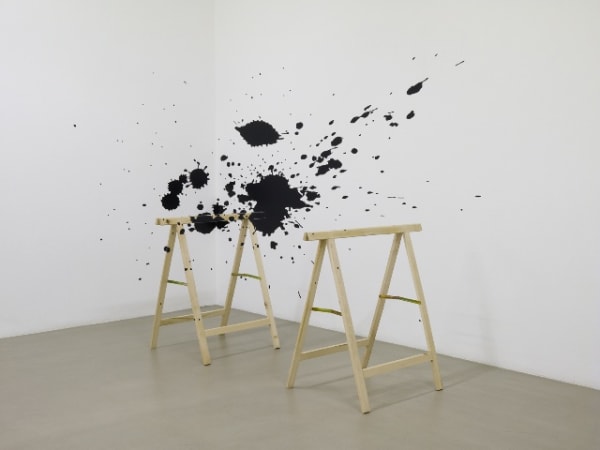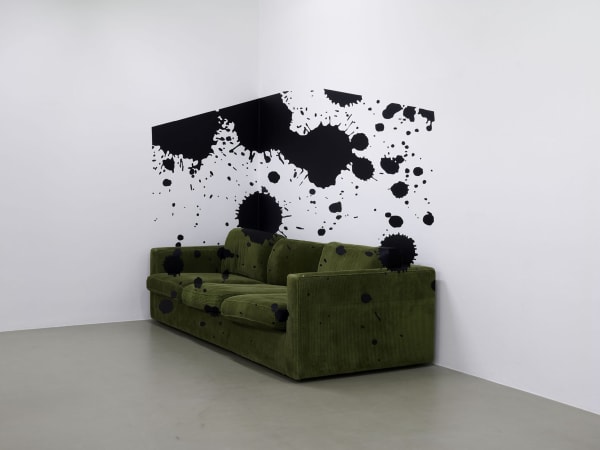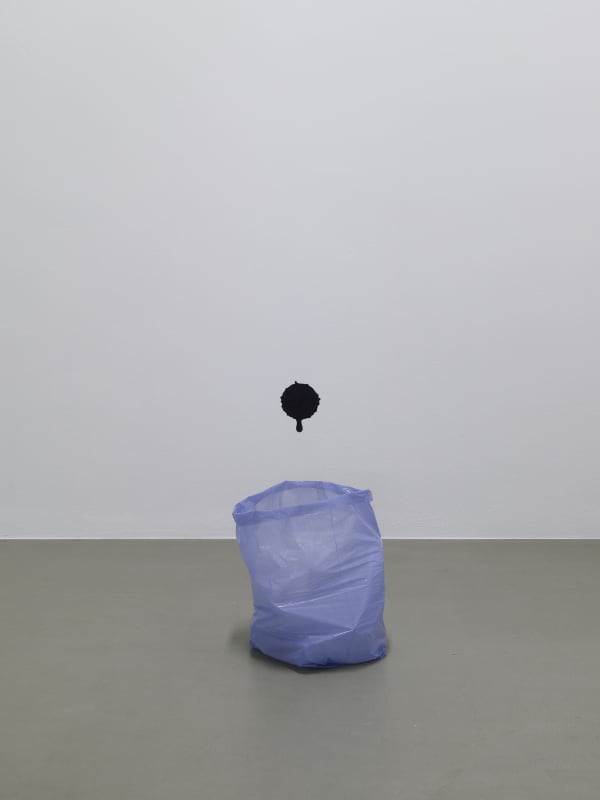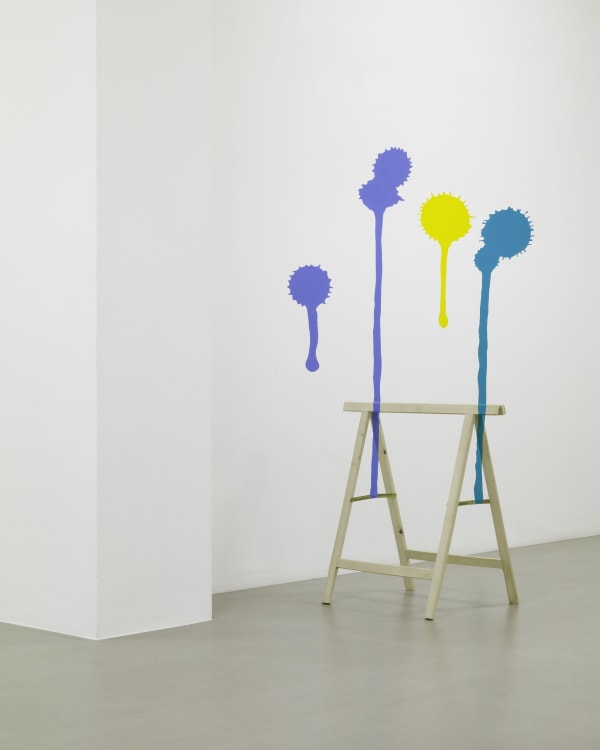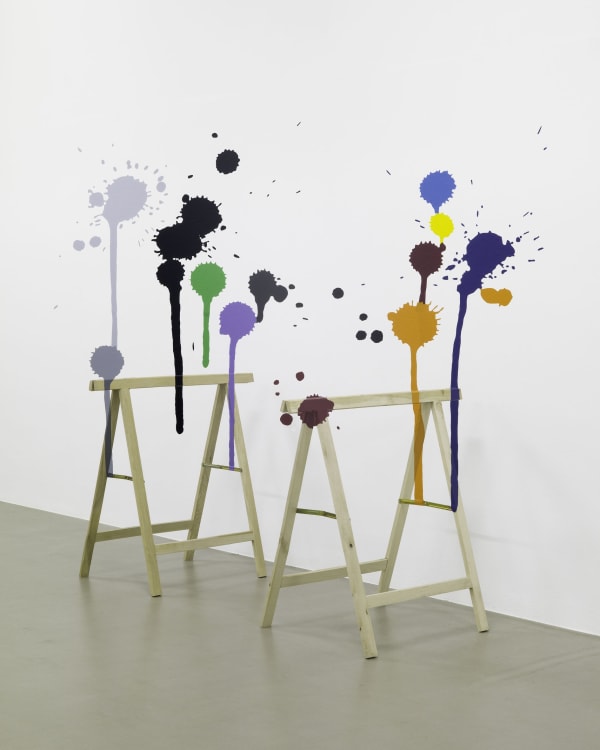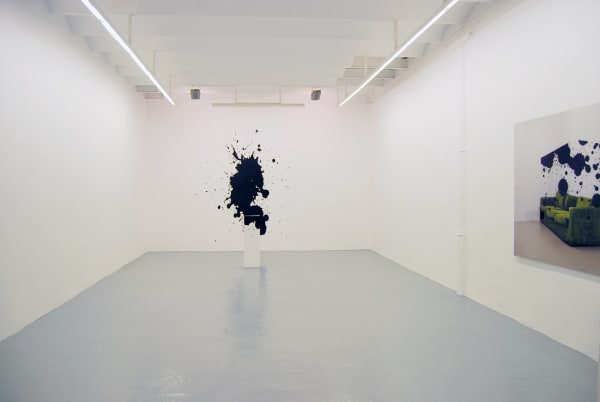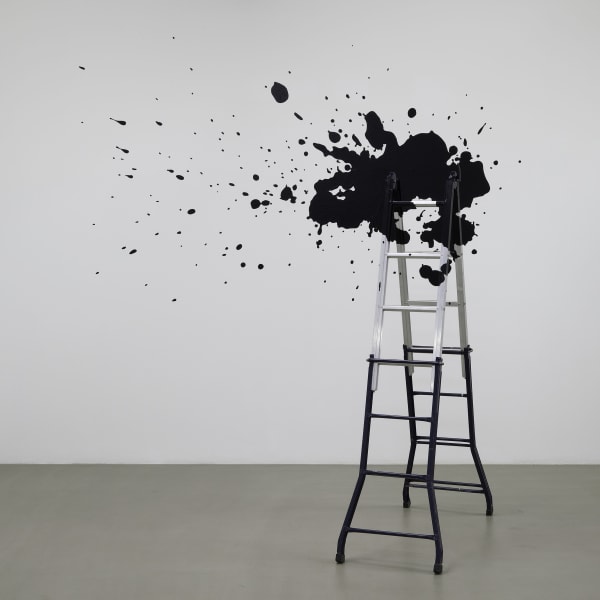Nowheristan: Igor Eškinja
With Nowheristan, the Croatian artist remains faithful to his personal approach, characterized by a reflexion on the production and reception of the image within the exhibition space.
Eškinja emphasizes the constructed character of the gaze and the regimes of visibility which influence our perception of reality and its representation. A neologism forged by the artist, the exhibition’s title associates the idea of no-place (nowhere) and the definition of a specific territory, as expressed by the suffix –stan, an arab word meaning “land” or “territory”. Such an oximoron refers at once to a physical place that can be geographically circumscribed, and to an immaterial space raised from imagination. Such an in-between state is precisely a key-aspect of Eškinja’s work: maintaining permanently a paradoxical equilibrium between material world and conceptual sphere.
Eškinja works mainly with two elements: the objects on the one hand, and, on the other, the forms which interact with them, by fitting over their surfaces and disturbing their visuality. The exhibition’s photographs represent daily objects from a frontal view, standing out against a neutral background and shrouded by a homogeneous white light. Each object is poluted by one or several stains of different colors, which look as drippings projected on the surface of the photograph and not directly on the object’s. In spite of this play with perception, the artist will disclose the photographs’ secret and the illusionistic process of constructing the bidimensional image with two site-specific installations realized into the gallery space. First, another stain ; then, a quite unusual carpet, realized with sheets of the exhibition’s press release.
In his photographic work as well as in his installations, Eškinja operates through an economy of means recalling conceptual art and arte povera’s lexicom. While he gets inspired by the factual and analytical properties of canonical conceptual art, the reference to arte povera can be noticed in the use of unvalued materials, turned invisible for being omnipresent in our daily lives: some easels, a sofa, some rubbish bags, or a ladder. The object is thus characterized by its simplicity, sometimes lapsing into triviality and, in a more suprising way, by its architectonic properties which play with the stain and create a sort of trompe-l’oeil, confusing the way perceive the object.
The “stain-image” operates as an attack directed to the seriousness of the ready-made object. It ironically points out how artificial the decontextualizing process performed by orthodox conceptual art can be, and unveils the mediation of every representation.
In this way, if Eškinja’s work seduces for its anti-spectacular, minimal aesthetics and its ability to transmit an univocal meaning which echoes the language of commercials, such an apparently explicit lack of ambiguity hides an ironical counterpoint. While objects and materials have a strong presence in Eškinja’s installations as well as in his photographs, the dialectical relationship between the objects’ materiality and the constructed and illusory character of their manifestation into space remains latent in his whole work. The physical approximation to the work always goes hand in hand with a conceptual reflexion around this same experience of perception. Many times in Eškinja’s work, especially in Nowheristan, we can hardly distinguish which form of expression comes first. Is the photograph an index of the tridimensional installation, or, on the contrary, is it its model?
Unlike the photographs and their deceptive perfection, the installations lead us to experience a discrepancy, hidden in the photograph. While photography freezes the event and maintains a single perspective, preventing any verification, the installation demystifies it by denying the logics of a single point of view. It is enough to move to see the perfect image vanishing into a multitude of dispersed points.
In a way, we could trace a continuity line between Eškinja’s work and Renaissance’s illusionistic tradition, expressed into anamorphic representations or trompe l’oeil, or through the use of perspective as an instrument controlling the gaze. Just as the artists from Renaissance used perspective in order to create a - even if illusory - perfect space, Eškinja’s photographs create the illusion of the visible. The event remains fixed into a precise frame of visibility and interpretation. The image comes to us almost imposed, as a visual corset, without any depth.
On the contrary, the installation illustrates the process of its own construction and reestablishes thus the process of elaboration of the photographic image. It provides a different experience in time and space.
In Nowheristan, installations and photographs present two aspects of a same event, two distinct frames of visibility. Though his wit, Eškinja elaborates a doble system, which simultaneously mystificates and demystificates. He reconciliates the aesthetic experience with the analysis of the processes that produce it, and blows established regimes of vision to propose a complex and critical version of representation.




